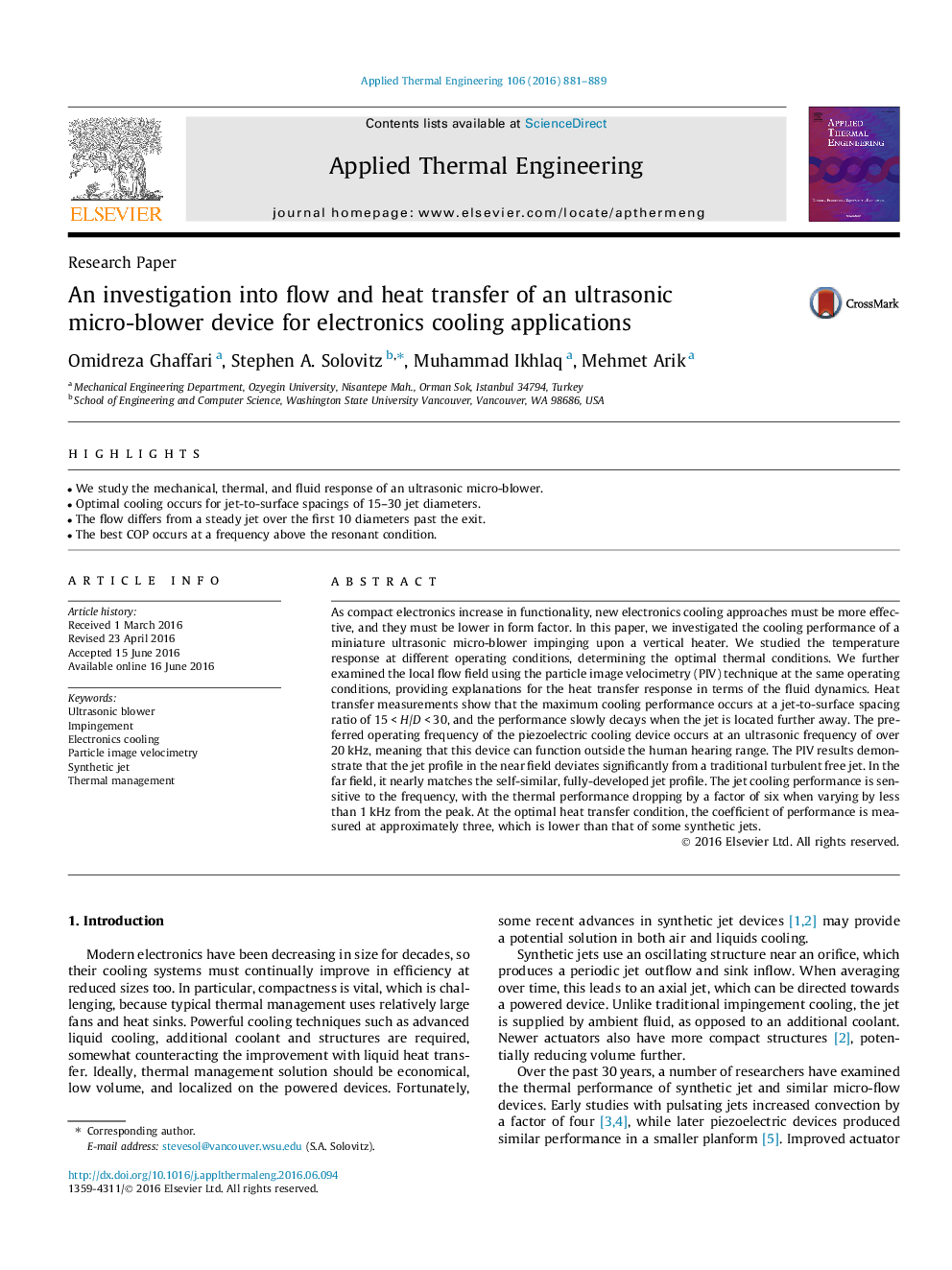| Article ID | Journal | Published Year | Pages | File Type |
|---|---|---|---|---|
| 7047483 | Applied Thermal Engineering | 2016 | 9 Pages |
Abstract
As compact electronics increase in functionality, new electronics cooling approaches must be more effective, and they must be lower in form factor. In this paper, we investigated the cooling performance of a miniature ultrasonic micro-blower impinging upon a vertical heater. We studied the temperature response at different operating conditions, determining the optimal thermal conditions. We further examined the local flow field using the particle image velocimetry (PIV) technique at the same operating conditions, providing explanations for the heat transfer response in terms of the fluid dynamics. Heat transfer measurements show that the maximum cooling performance occurs at a jet-to-surface spacing ratio of 15Â <Â H/DÂ <Â 30, and the performance slowly decays when the jet is located further away. The preferred operating frequency of the piezoelectric cooling device occurs at an ultrasonic frequency of over 20Â kHz, meaning that this device can function outside the human hearing range. The PIV results demonstrate that the jet profile in the near field deviates significantly from a traditional turbulent free jet. In the far field, it nearly matches the self-similar, fully-developed jet profile. The jet cooling performance is sensitive to the frequency, with the thermal performance dropping by a factor of six when varying by less than 1Â kHz from the peak. At the optimal heat transfer condition, the coefficient of performance is measured at approximately three, which is lower than that of some synthetic jets.
Related Topics
Physical Sciences and Engineering
Chemical Engineering
Fluid Flow and Transfer Processes
Authors
Omidreza Ghaffari, Stephen A. Solovitz, Muhammad Ikhlaq, Mehmet Arik,
